Hearthstone officially celebrated one full decade on the market a month ago. It’s really hard to believe that it’s been that long to me, and for players who started before the game’s official full launch, it’ll be even longer for you! Hearthstone has grown a lot as a game over the course of 10 years with nearly 5000 different cards and a myriad of different game modes added during its run. To celebrate all the fun years that the game has had, I thought it’d be fun to look through all of the old Legendary cards that were part of the original Classic set, which basically functioned as the base set. There’s a lot of history behind these old cards.
We’ve reached the final part of this four-part series. We started by looking at the class cards, and then gradually went up in Costs with the Neutral cards until we arrived here at all of the more expensive ones. At the end of this article, we’d have looked back at all of the Legendary cards that the game started with.
Baron Geddon
Baron Geddon is, among being the only 7-Cost card in this article, yet another character central to Blackrock Mountain like Leeroy Jenkins, The Beast, and one other card we’ll see later in this article. The presence of multiple Blackrock Mountain characters implies that the thought of Blackrock Mountain as an adventure set most likely did not exist yet. What I think happened is that Team 5 most likely took a lot of characters from Blackrock Mountain because it made everything simpler. It is one of the most noteworthy areas of World of Warcraft after all.
Geddon has a pretty simple effect of simply dealing 2 damage to everything else at the end of the turn, and when I say everything, I mean that the card even specifically emphasizes this when it says ALL. Repeatable AoEs like this back in the day were quite rare, so it seems reasonable to believe that Team 5 thought that one that requires no condition to go off would work as a simple, but effective Legendary. Geddon has been very occasionally useful, particularly in combination with Frost Lich Jaina which would upgrade the 2 damage AoE into one with Lifesteal. Theoretically if Geddon were to survive a turn or two, then it could leave your opponent in a rough spot because the 2 damage would be unavoidable.
Geddon has since been buffed to have 7 Health up from 5. It is unlikely that Geddon will ever see play again, but perhaps the card might be supported in some crazy way to make it competitive. What that way would be, I’m not quite sure, but it could happen.
Gruul
Gruul the Dragonkiller is a Gronn, which is basically a race of giants with some discernible characteristics that make them different from other giants. He earned the title of “Dragonkiller” from slaughtering several black dragons who had arrived in Outland. It appears that even with the dragon’s ability to fly and breathe shit deadly enough to put people with halitosis to shame, Gruul was still able to best the dragons. He is also allied with the Illidari.
Gruul is one of the simplest Legendary cards in the game, simply gaining +1/+1 at the end of each turn. Simple enough to the point where it was basically rarity-crept in the very next card set with Shade of Naxxramas. This effect mirrors an effect Gruul has as a raid boss where he gains extra strength over time making him tougher to kill as the fight goes on. While this effect worked fine for Shade since he’s cheap and protects himself with Stealth, it does not work for Gruul. Gruul is just an 8 mana 7/7 that does absolutely nothing else except gain stats. No protection, no special ability. Nope, nothing. So when you play Gruul and your opponent kills it with a removal spell, it did absolutely nothing to impede their gameplay and now you’re probably behind on tempo.
This is unfortunately why Gruul is such a bad card. He is basically a perfect example of how giant minions without immediate impacts are terrible cards (except Rattlegore since his effect represents an absolutely absurd amount of value). Even back in the Classic days, you couldn’t bank on Gruul surviving and then hitting your opponent since he’s extremely prone to removal. But while Gruul has always been a terrible card, he’s still a(n almost) strictly better Boogeymonster. If you can figure out what was going on in the developer’s heads when they approved of that card, you’re probably smart enough to be accepted into MENSA.
Here’s a fun fact for you. Gruul in World of Warcraft does not look anything like he does in Hearthstone. In Hearthstone, his body is purple whereas his body in every other depiction of the character is more of a shade of red. He appears as a boss in the Trial by Felfire challenges where he has his correct color.
Ragnaros the Firelord
From a really terrible Legendary to a fantastic one, Ragnaros the Firelord is both one of the most notable characters in all of Warcraft and was a staple Legendary for many decks in the earlier years of Hearthstone. Ragnaros is the Elemental Lord of fire (or he was until Smolderon came along) and I believe he is supposed to be the strongest of the four. Ergo, it makes sense why his card would be super good.
Ragnaros’s ability is that he can’t attack… … … But he also deals 8 damage to a random enemy at the end of your turn, and that includes the turn you play him so he can destroy a problematic minion on the turn you play him and if he stays alive, he’ll keep burning the enemy or their minions down, and 8 damage will kill almost anything in the game and put a really big damper into the enemy’s Health. Ragnaros was an extremely strong Legendary for a variety of decks for multiple years due to his ability to deal a lot of damage and if he stayed alive for even a single turn, he would get a great deal of value out of his ability.
How much of an impact he has on Hearthstone cannot be understated. He was one of the first cards to receive an alternate card appearance as Ragnaros, Lightlord in Whispers of the Old Gods (which CAN attack) and even earlier than that, you could even play as him via Majordomo Executus. He was also among the first 6 cards to be rotated to the Hall of Fame and has been given a Diamond version. He has also been made summonable by Jan'alai, the Dragonhawk and JIVE, INSECT!, and you can equip Sulfuras through Fire Plume's Heart. He’s even a Shaman class hero now as well.
As is the case for most cards in this four-part series, Ragnaros is no longer the insane powerhouse that he was all of those years ago, but his legacy still lives on not only for many Hearthstone players, but also through other cards as well.
Alexstrasza
Alexstrasza is the first of 6 Dragons in this article (which all occupy the remaining cards here). She basically heralds over all living life in Azeroth and has earned several nicknames along the lines of the Life-Binder and the Dragon Queen and is the Aspect of the Red Dragonflight. She’s a very popular character among Warcraft and Hearthstone fans. Content creator Alliestrasza even gets her online name from the character and her card.
Speaking of her card, Alexstrasza has a unique and flexible ability to set the Health of either hero to 15. This in turn means that she can act as either a fairly sizable heal for you if you’re on death’s door, or it can put a significant damper to your opponent’s Health if they’re running healthy and happy. Her flexibility and power made her a popular card with many players and she saw quite a fair amount of play.
Alexstrasza made her first alternate appearance as Dragonqueen Alexstrasza in Descent of Dragons, helping out the League of Explorers. When the 2021 Core set rolled around, she was replaced by a new card, Alexstrasza the Life-Binder. This is a trait shared with all of the other Dragon Aspects. While both of her other cards have seen some play over the years, I would argue that her original card is probably still the most iconic. Though her Descent of Dragons card ended up with a very lasting impact too since it was not only nerfed but also sparked a major rule change in the game. Alex’s impact will always be remembered though, no matter what version we discuss.
Malygos
Malygos is the blue Dragon Aspect and represents the power of magic. When you play him, he’ll just straight up tell you that he is the “essence of magic” and given that his power was granted to him by a titan, I would argue that that’s entirely accurate. Malygos just IS magic.
His card is a very simple one, but one that basically any Hearthstone player is familiar with. His effect simply grants you Spell Damage +5. Up until Journey to Un’Goro, he was the only minion in the game (that you can put into a Constructed deck) that granted you more than 1 Spell Damage. But while his ability may consist of simply a keyword and nothing else, he carries EXTREMELY hard. On paper, the fact that he’s 9 mana means that his ability should be difficult to abuse since you’d only be able to spend a single mana on a spell to use his ability on.
That’s where I introduce you to one of every card game player’s best friends and worst enemies. Mana cheating! True, Malygos’s mana cost of 9 is quite steep, but if you can cheapen his Cost, cheat him out, or even get more mana after playing him, your options for abusing his effect skyrocket pretty tremendously. And that’s what players did with him. With 5 Spell Damage, every spell is now dealing a LOT more than what it would normally do. This would allow you to spam a bunch of cheap burn spells that now deal about 8 damage or so and kill your opponent from what seems like nothing. His design also ended up being very limiting both for cheap burn spells and for Cost reduction.
Malygos was reprinted in Descent of Dragons as Malygos, Aspect of Magic and in the 2021 Core set as Malygos the Spellweaver. Unlike all of the other Dragon Aspects, Malygos’s Core card has a very different effect that doesn’t tie to his original effect at all, presumably because the developers knew how limiting the original card was and what are you going to do, print a stronger version of that? It was a good move on their part.
Nozdormu
Nozdormu is the Aspect of the Bronze Dragonflight and the master of time, which is basically the most powerful ability you can give absolutely anyone in anything. Time magic will mess stuff up. It’s messed up quite a lot because Nozdormu has a dark, alternate self in the form of Murozond.
But not in the way you might think. Nozdormu is the only Dragon Aspect that has never seen competitive play and his effect is instead basically just used to abuse glitches. Unlike basically every other card from this set, Nozdormu’s effect has never been reprinted on another card except for his Core 2021 card which we will get to in a bit. His effect simply shortens the turn timer drastically to the point where both players only have 15 seconds each. This means that if you play Nozdormu, you’ll want to plan ahead a little bit as to what you want to do on your next few turns.
In many cases, his effect is meaningless because he has no protection so if your opponent can remove him immediately, then he basically did nothing. On the other hand, his effect also becomes problematic in the cases of things like slow player input, lengthy card animations, and the less fluid mobile client. For all these reasons, it’s probably best that his effect hasn’t been seen again. The 15 second time limit is arguably just as bad for you as it is for your opponent since you too will find yourself in a situation where you will need to scramble and play quickly. It’s for the double-sided handicap and lack of immediate impact that he hasn’t seen any play.
Just like the other Dragon Aspects, Nozdormu has received a new card in Descent of Dragons as Nozdormu the Timeless with an entirely new effect, and in the Core 2021 set as Nozdormu the Eternal which very surprisingly keeps his schtick of shortening the turn timer. But no one would ever play Nozdormu the Eternal because it requires you to run a really bad card in your deck and to match up against another player running the same really bad card for a double-sided effect. In response to this, the Hearthstone community created Nozdormu Day on the 15th of each month encouraging people to run Nozdormu the Timeless although if I’m being real, I highly doubt that most people actually go along with it.
Onyxia
Onyxia is the daughter of Deathwing, sister of Nefarian, draconic form of Lady Prestor, and one of the strongest black dragons in the Warcraft universe. She is a secondary antagonist in the original release of World of Warcraft and was one of the first raid bosses to ever be defeated by any player. She’s also the only Legendary Dragon from the set who isn't an Aspect.
But while Onyxia holds a pretty significant piece of Warcraft history, her card in Hearthstone is not that impressive. Back in the day, board filling effects were quite rare so it makes sense to put one on a Legendary, but the 1/1s don’t do anything special and neither does Onyxia. She’s just an 8/8 stat-stick that fills the board with 1/1 stat-sticks. Unlike Dr. Boom's Boom Bots which would generally kill part of the board or deal some face damage, Onyxia’s Whelps present basically no threat since they shouldn’t really be a problem to take out.
With the 2021 Core set, Onyxia got modernized as Onyxia the Broodmother which basically makes her effect repeatable instead. This version means that she can be a target for being cheated out of the deck and the Whelps can continue to take control of the game after multiple turns although it’s not particularly likely that this will last too long. In United in Stormwind, she was printed in her human form as Lady Prestor which is arguably the most chaotic form she’s been printed in. Later that year, she was printed again as Raid Boss Onyxia which was an incredibly strong card and Onyxia finally saw the light at the end of the tunnel.
Ysera
Ysera is the Aspect of the Green Dragonflight and the master of dreams, which probably means that she has seen some really cursed things, but that’s not the focus of what we’ll talk about here. She also happens to be the sister of Alexstrasza and the adoptive mother of Cenarius, and by now you’ve probably realized that everyone in the Warcraft universe is related to each other via six degrees of separation. Is Tirion Fordring related to Varok Saurfang? The connection may be a lot closer than we suspect.
Out of all of the Dragon Legendaries of the Classic set, Ysera’s effect is the one that has the most components. At the end of your turn, she’ll give you a random Dream card, one of five to be precise. For some reason they also have the Hunter border and yet they still count as Neutral cards for gameplay purposes. Ysera used to be a pretty good card. Her Dream cards are mostly cheap and effective and back in the day, the 4/12 statline was significant because it dodged Big Game Hunter… although it did give Priest their own specific combo to grab it via Shrinkmeister and Cabal Shadow Priest. Still, it’s only one class that has that counter versus 9 (yes, we really have gone that far in Hearthstone).
I wouldn’t be able to tell you the exact time she stopped seeing play, but she fell off due to a combination of the meta speeding up and the average power level increasing so that when the meta did become slow again, Ysera couldn’t keep up. When she was buffed with the rest of the Core set, she was buffed to give you two Dream cards per turn instead of one. This however pales in comparison to her new card, Ysera the Dreamer, which gives you every Dream card. She was also reprinted in Descent of Dragons as Ysera, Unleashed. In Wailing Caverns, another card, Archdruid Naralex, would be another source of Dream cards.
Deathwing
Deathwing was the Aspect of the Black Dragonflight known and went by the name of Neltharion the Earth-Warder. One day the Old Gods silently whispered into his ear about the crazy power that he could hold over the world and he corrupted into the black, deadly dragon we know as Deathwing. He has a metal jaw, which probably gives him some mouth problems. Even dragons need to see a dentist every now and then, and you should too. He is the antagonist of the Cataclysm expansion and is probably one of the most significant figures in all of Warcraft.
But in spite of his strength and his lore, his original card is not known for making huge waves in the Constructed scene. He saw some play every once in a while, but he came with a huge downside. He gets rid of your entire hand in exchange for clearing the board and giving you a 12/12 body. In other words, his effect is the epitome of putting all of your eggs in one basket. He is a pretty huge swing in your direction, but just one hard removal will set you back pretty far too. Since you have no board and no hand, even just a simple Taunt minion can stop Deathwing dead in his tracks unless you happen to topdeck a damage or removal spell next turn. Playing Deathwing always comes with a huge risk, but when it pays off, it will carry you.
Deathwing was the first of the Aspects to receive a new card, which was Deathwing, Dragonlord in Whispers of the Old Gods. This version as far as I can tell didn’t have a place anywhere. Later he would get a new card in Descent of Dragons as Deathwing, Mad Aspect and a buffed version of his Core form, Deathwing the Destroyer. In Onyxia’s Lair, a card called Spawn of Deathwing came out for Warlock which is a flavorfully miniaturized version of his effect. His Spawn card is also neither Onyxia nor Nefarian, so it can be said that Deathwing really got around.
I apologize that this took so long to get out, but this is the end! Thank you for tagging along with me on this journey of looking back at the game's humble beginnings. If you've been a long time player, let me know in the comments what your favorite memories of the old days were.
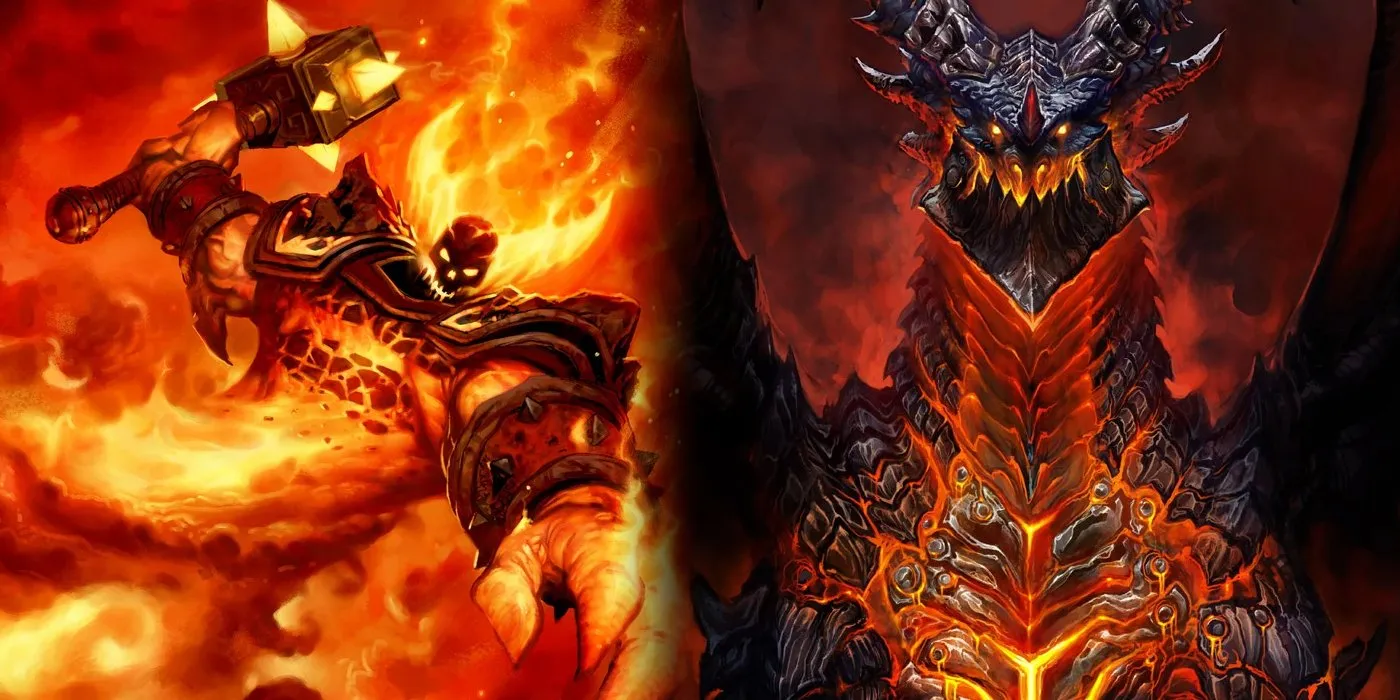
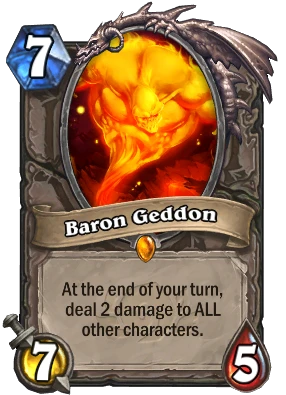
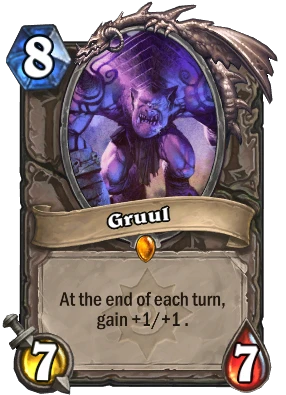
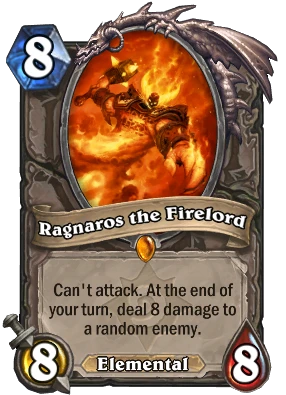

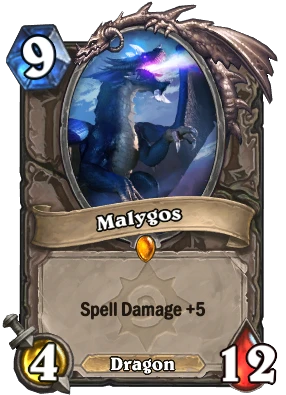
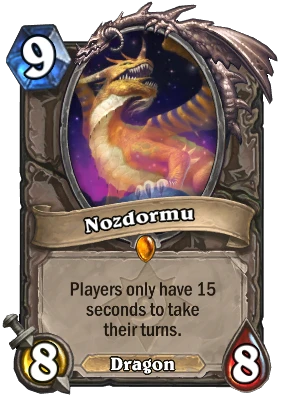
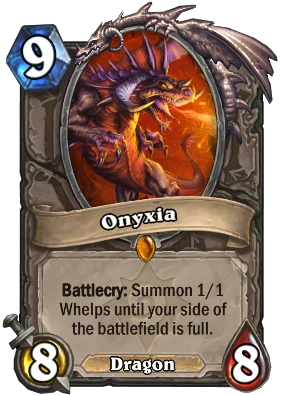

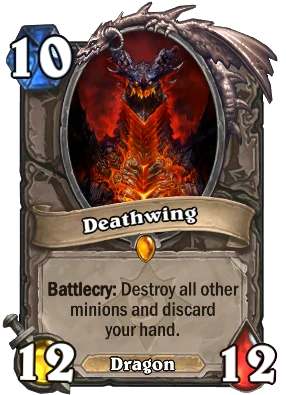
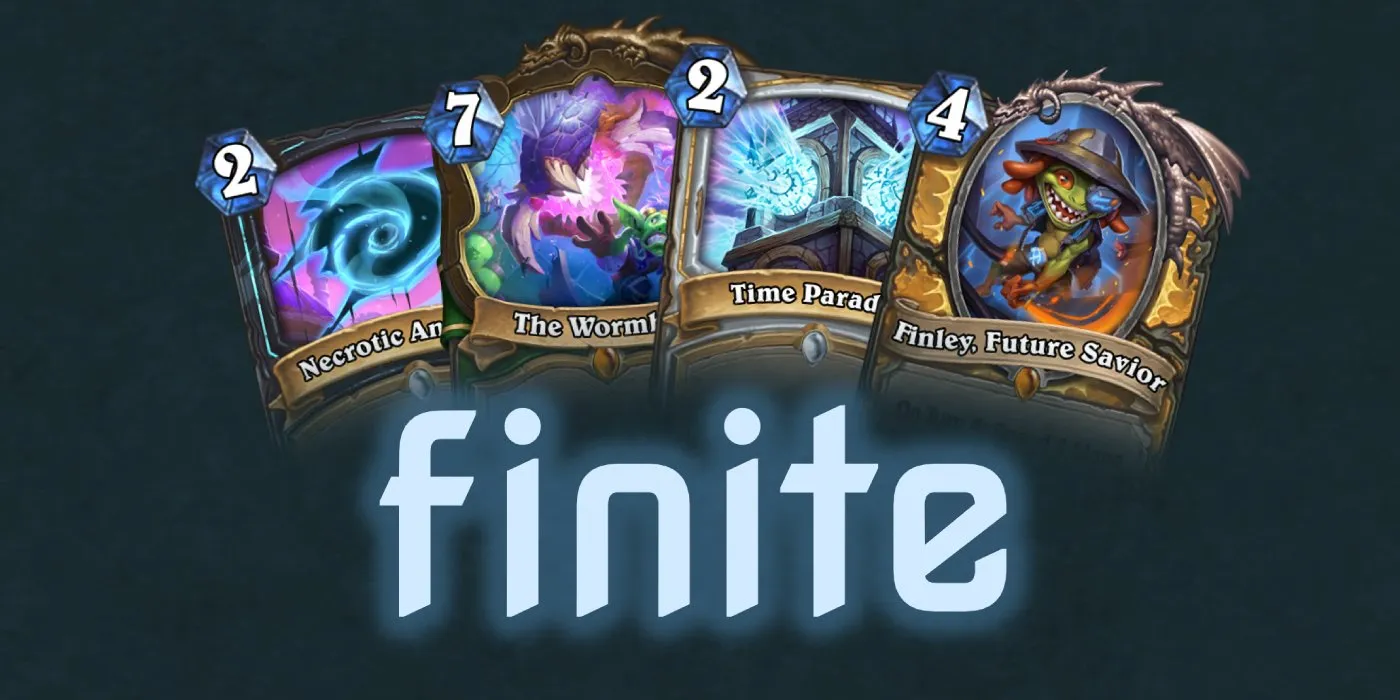
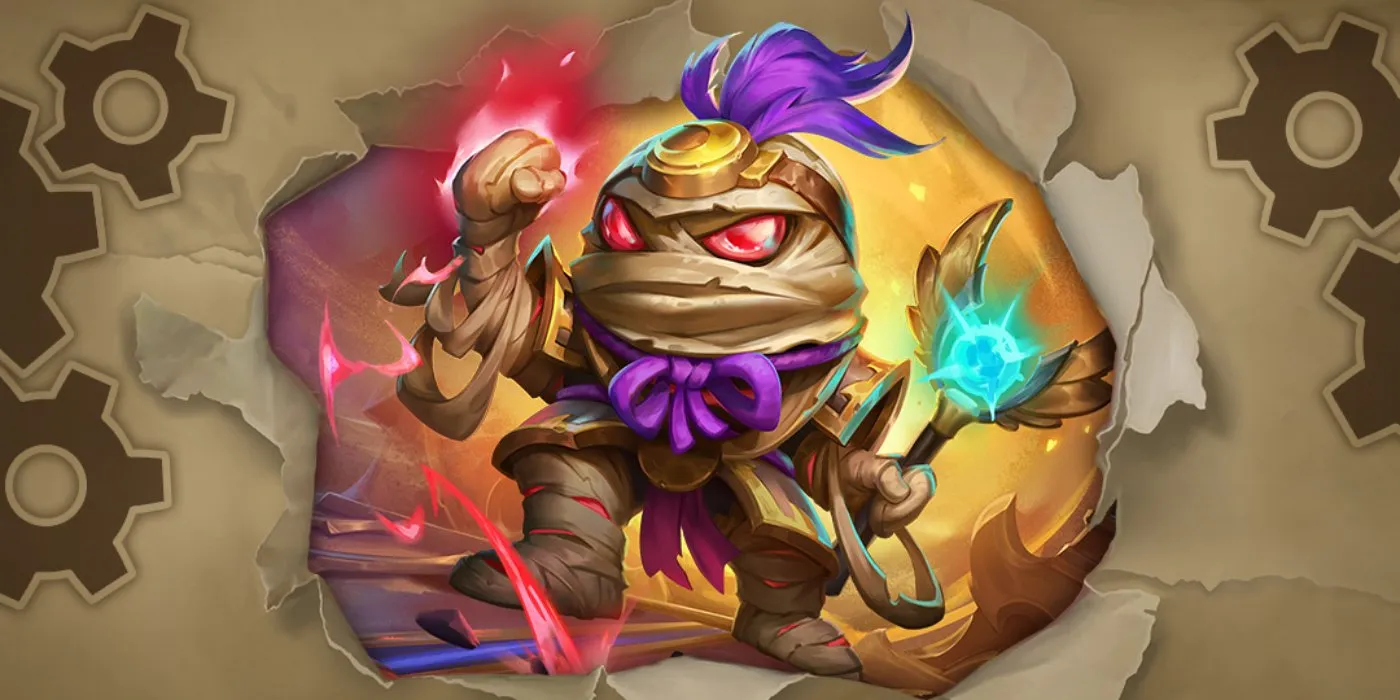
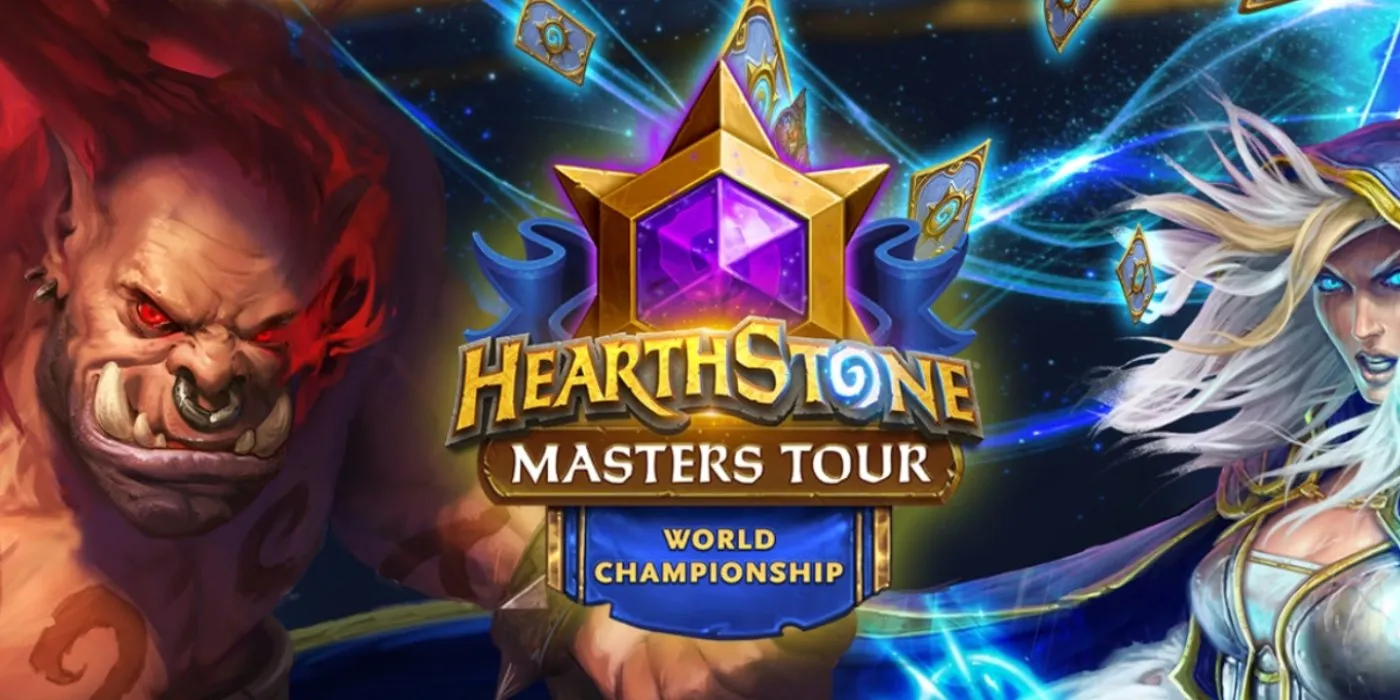
Comments
Deathwing may be difficult to play but worth it for that sweet animation.
I also keep the newer version of Norzdomu in my Dragon Druid for fun. I've found at least one other person doing the same during ladder. Hilarious!
Ragnaros wins are still satisfying/infuriating even after all these years.
DW in Arena way back in old days, those were the plays :D Not something special today, or even that good, but oh the memories :D
I'm so bad at arena I tune out everything I do in that mode. It's nothing but 150 for a pack for me. Haha.
Yeah, I get that. Arena was my main game mode for years, but over the time with how new cards got more and more powerful, Blizzard did little to take Arena into consideration, so I stopped playing it. It just became a huge RNG fest, and no longer was it about skill as much as it was before. And the price of entry was too high for you to basically just play a slot machine with your gold. Not worth it, sadly. Even tho I still love the game mode's idea, they ruined it by not keeping up with it over the years of development.
I was more saying I'm just bad at it. Never been good at drafts in any game. I'm much more a constructed player (and still not good at that), putting together weird combos is fun!